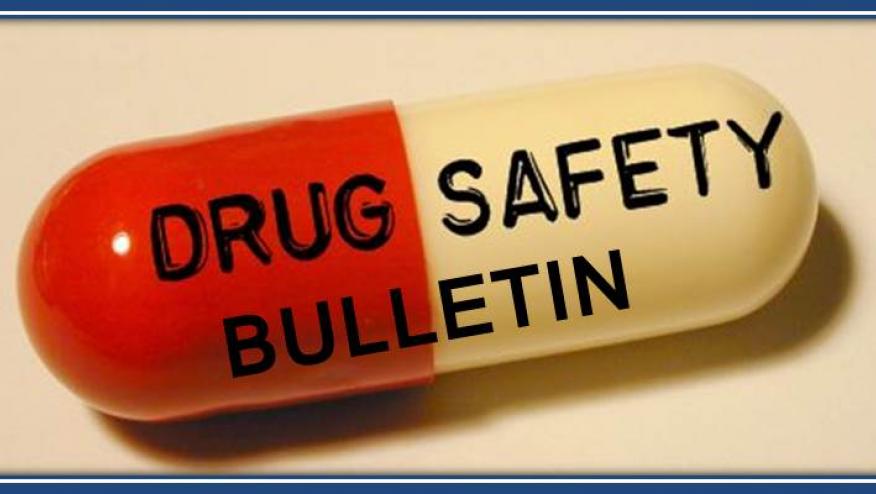DSB: ACR 2015 Safety Reports Save

The following is a compilation of abstracts presented at the 2015 Annual ACR meeting in San Francisco. These were chosen on the basis of impact, quality and safety message.
Risk of Cancer in Non-TNFi Biologics-Treated RA (Hjalmar Wadström, Johan Askling and the ARTIS study group; abstract #2141). Using the Swedish ARTIS registry, they compared risk of malignancy in biologic naïve RA patients against the general population and against RA patients treated with TNF inhibitors, rituximab abatacept, or tocilizumab. Overall they found a slightly higher rate of cancer in RA patients compared to the general population (HR 1.1). Compared to biologic naïve RA patients there was no increased risk of first invasive solid or hematologic malignancy in those on TNFi, 2nd TNFi, TCZ, ABA or RTX.
Immunogenicity of Subcutaneous and Intravenous Tocilizumab As Monotherapy or in Combination with DMARDs (Mark Genovese, et al Abstract #3114 ). In the drug development trials of TCZ, samples were collected and anti-drug antibodies (AD-Ab) were assessed in 1798 patients treated with TCZ sc and in 5875 patients treated with TCZ iv. Overall AD-Ab in TCZ sc and TCZ iv treated patients were low (2.0% and 1.2%, respectively). Serious reactions included 10 anaphylaxis (all with TCZ iv), 102 hypersensitivity reactions (leading to TCZ withdrawal) and 54 hypersensitivity SAE; the majority of these occurred in patients receiving TCZ iv. Serious reactions could not be linked to TCZ AD-Ab, as none of the patients treated with TCZ sc monotherapy, combination TCZ sc + DMARDs or TCZ iv monotherapy had such events, even if they developed AD-Abs. Strangely the few anaphylaxis cases occurred in those receiving TCZ iv in combination with a DMARD. Regardless the presence of AD-Ab did not affect efficacy and had a minimal/no effect on safety.
Risk for Lower Intestinal Perforations in RA Patients Treated with Tocilizumab in Comparison to Treatment with TNF Inhibitors, Rituximab, Abatacept or Conventional Synthetic DMARDs (Anja Strangfeld, et al; Abstract 2051). Analyses of the German RA biologics (RABBIT) registry looked at the risk of GI perforations in RA and RA on therapy. The population risk is rare (0.04/1,000 pt-yrs). Previous studies by Curtis et al showed the risk of perforations to be most closely tied to steroid use. In their registry of over 15,000 RA patients the mean prednisone dose ranged from 3.7 to 6 mg/day. Upper GI perforations were rare (n=7) and they found 35 lower GI perforations, most (27) with concomitant glucocorticoids (≥7.5 mg in 12 patients). The greatest risk was seen in those on Glucocorticoids and age associated with a higher risk. Tocilizumab had significantly more perforations and a higher mortality from perforations than other DMARDs.
Risk of Chronic Obstructive Pulmonary Disease in Rheumatoid Arthritis: A Population Based Cohort Study (Katherine McGuire, et al. Abstract #31). The Nurses’ Health Study last year identified COPD as a leading cause of mortality in RA. These researchers used a population claims database from British Columbia and examined the frequency of COPD in RA using a retrospective cohort study of incident RA (identified between 1996-2010), compared to the general population. Among 24,625 RA patients and 25,537 controls they identified 892 and 551 COPD cases by hospitalization ICD-9 code, respectively. After adjusting for confounders, RA had a 42% greater risk of developing COPD than controls. The increase in risk did not differ according to age or gender. The increased risk in RA remained significant after adjusting for smoking.
Drug Specific Risk and Associated Factors for Vasculitis-like Events in Patients Exposed to Tumor Necrosis Factor Inhibitor Therapy (Meghna Jani, et al. Abstract 2141). Researchers from the British Society of Rheumatology Biologics Register (BSRBR) analyzed over 15,000 on TNF inhibitors and >4000 on DMARDs to assess the risk of “vasculitis” associated with TNFi use. They excluded patients with known history of diagnosis of vasculitis, and drugs or infections known to cause vasculitis. The found a total of 81 cases (14/10,000 PY) in those on TNFi and 14 cases (7/10,000 PY) for those taking DMARDs. The adjusted hazard ratio was not significant (HR 1.27; 95CI 0.4 – 4.0). Most of these events occurred in the first year, occurred with nearly all TNFi, two-thirds were limited to skin (digital ischemia, nailfold vasculitis) and one-third were systemic vasculitides (neurologic, respiratory, ENT, renal) with one ANCA (+) death in the latter group. Overall, vasculitis was not associated with TNFi use, but was associated with signs of severe RA – high DAS28, HAQ and not being on methotrexate.










If you are a health practitioner, you may Login/Register to comment.
Due to the nature of these comment forums, only health practitioners are allowed to comment at this time.